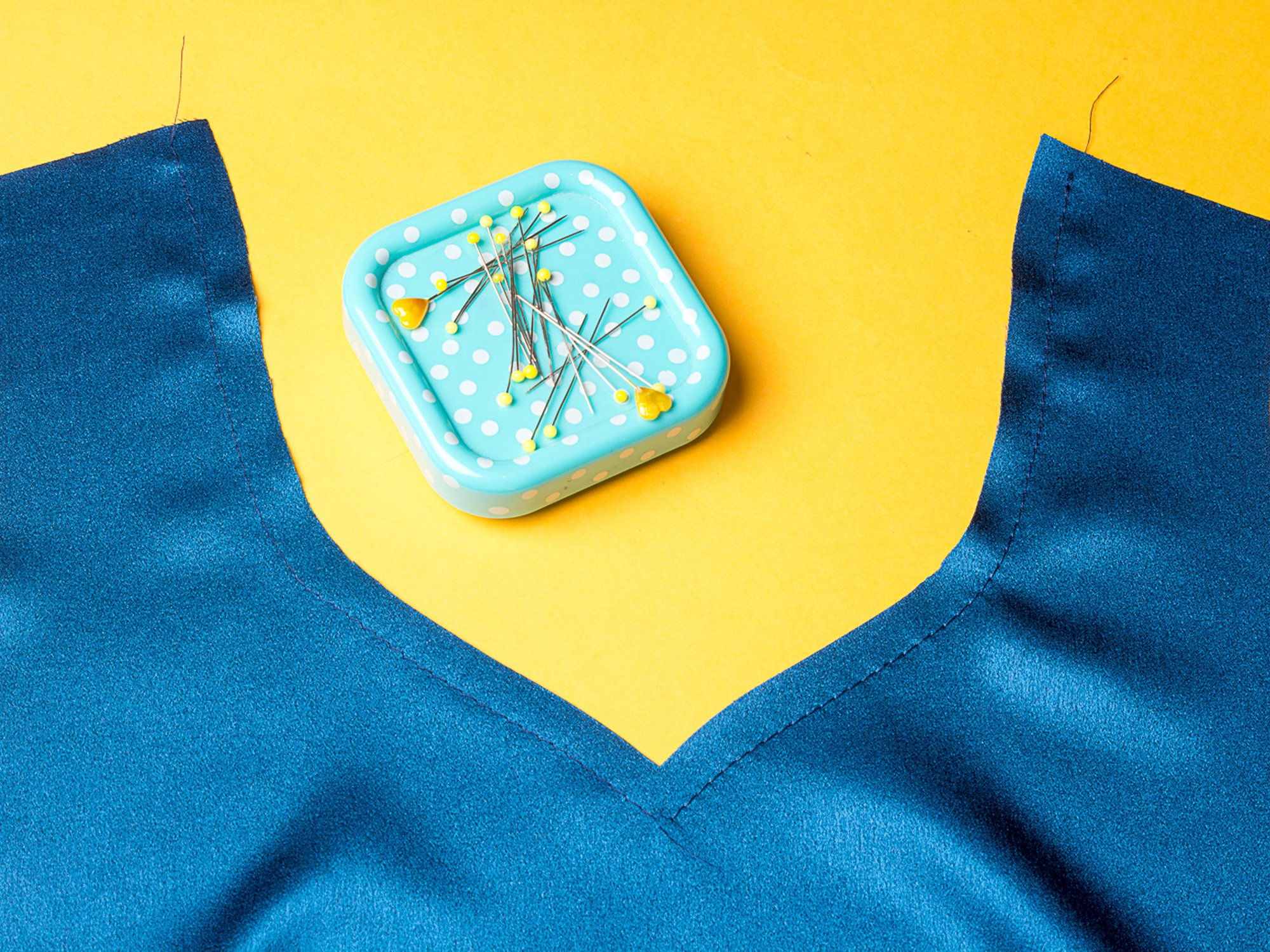How to… Stay stitch
Stay stitching is a line of long stitches sewn within the seam allowance on a single layer of fabric.
It is used to stop curved cut edges or edges of fabric cut on the bias (diagonal through the fabric) from stretching out. It can be used to control stretch in edges to help them to fit against areas which are more resistant to stretching, for example on the princess seams of the Ready to Party Dress.
How to stay stitch
Set your stitch length to the longest it will go to (usually 5mm) and stitch a continuous row of stitches within the seam allowance, approximately 1cm from the edge of the fabric if the seam allowance is 1.5cm. You may find the tension needs to be adjusted for a longer stitch to stop it gathering so do a test on a scrap first to check and if it is too tight, causing the fabric to pucker, then loosen the tension.
It is usually advised to stay stitch the neckline, waistline and sometimes the back seam of a garment.
When sewing a symmetrical curve, such as a neckline, it is best to sew from one shoulder point to the centre, cut off, flip over the fabric and sew from the other shoulder point to the centre as sewing from one side to the other can distort the curve.
On stretchy, slinky fabrics like lightweight silk, viscose or viscose jersey you can prevent further stretching and distortion by using fusible stay tape on curved necklines and shoulder seams.
On bulkier stretchy fabrics, like wool coating for example, you can use sew on stay tape which you place on the wrong side of the fabric before stay stitching.
It is really that important?
Although it may seem like a bit of a waste of time, stay stitching can help prevent a lot of headaches later on down the line. As fabric is handled during the construction process, it can easily stretch. This can be a disaster if you come to attach a neck facing, reinforced with interfacing so it will not stretch, only to find the neckline, cut on a curve, has stretched out. Skipping the stay stitching can produce puckers and wrinkles in the most prominent areas of the garment! So if the instructions advise staystitching - do it!
Achieve fit perfection!
Stay stitching was essential to achieve the perfect fit that Janine has for her Ready to Party dress.




